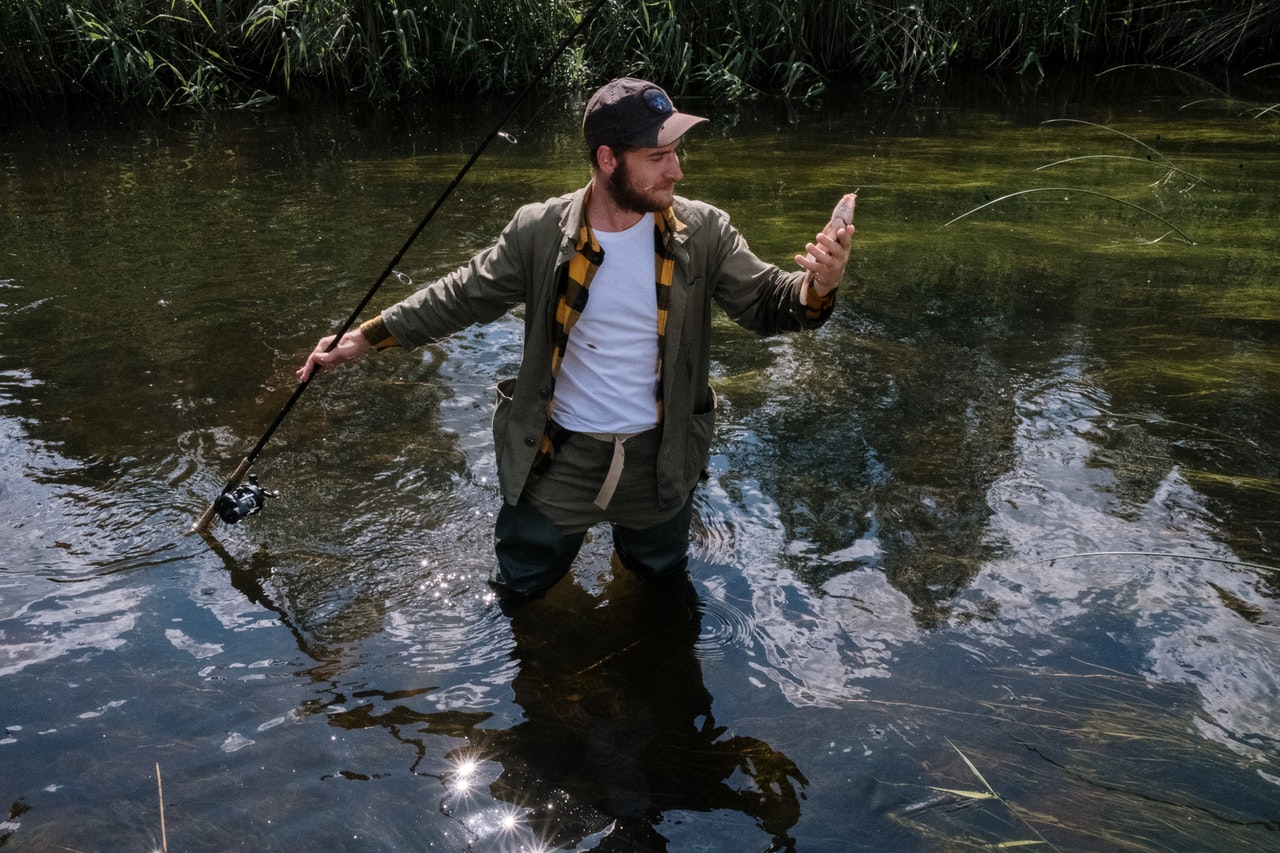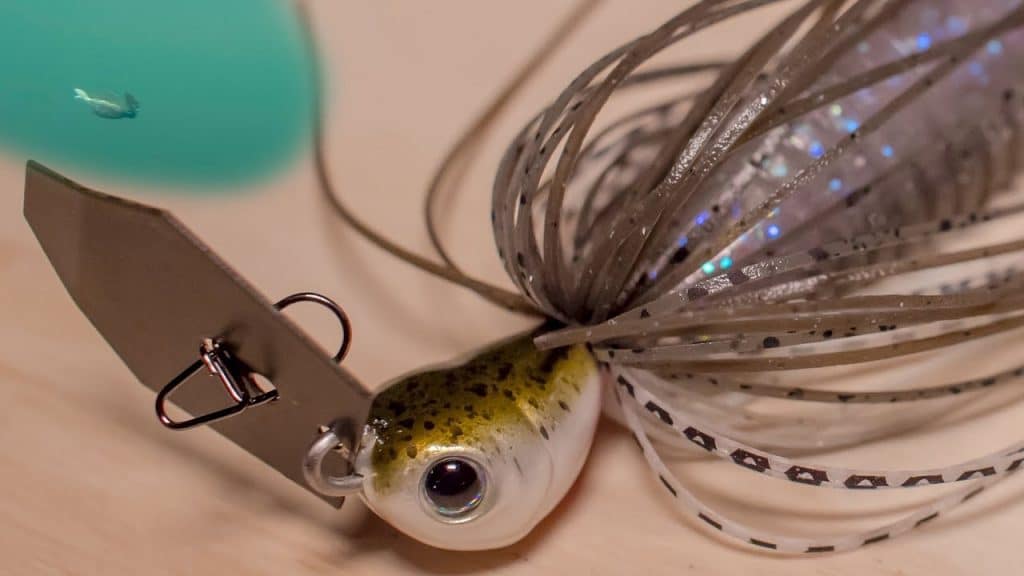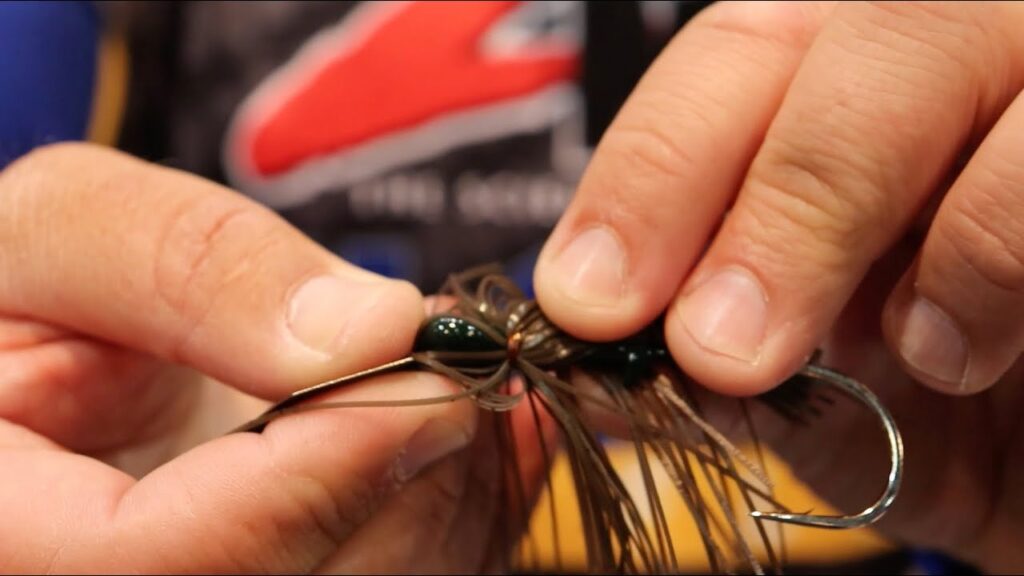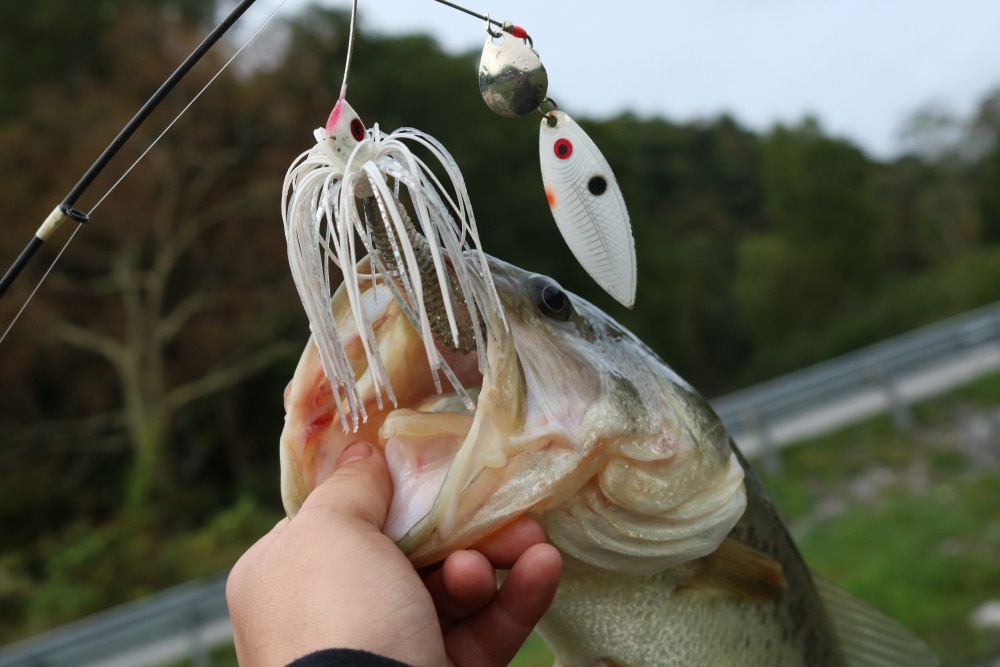As technology has evolved over time, there have been tons of upgrades to the tackle industry. One of which is the Chatterbait. As time moves on, people need new, productive ways to catch fish. This is how the Chatterbait was born. A Chatterbait is a bladed jig that takes the classic swim jig up a notch. The blade on the top adds a unique vibration and flash that attract bass in particular. So, here is a beginner’s guide to the Chatterbait Fishing!
How to Fish a Chatterbait
The first step in mastering the Chatterbait is knowing when to use it. Without that background knowledge, it is going to be very hard to get a fish on the line.
My favorite time to use a Chatterbait is when I am scoping out a new body of water. Because the Chatterbait is considered a moving bait, you can cover a lot of new water in a short amount of time. The hardest part of fishing new water is finding where the fish like to lay. So, cranking your Chatterbait through various hotspots and hope for the best.
But, there are so many other uses for this lure. It is such a versatile presentation that you can have these on deck for any situation.
How to use a Chatterbait for Bass
Bass are probably the most sought after fish to target when using a Chatterbait. This is for a number of reasons. One of which is the flash feature that comes with the blade. It is used to make the bass think a shad is swimming by.

Another reason is the vibration. The patented design of the Chatterbait is there to trigger something within the bass that makes it fired up and ready to bite.
Now that you know a couple reasons why bass love this lure, it is important to break down some of the ways that you can use a Chatterbait to catch bass.
- Slow rolling
My favorite technique when fishing with a Chatterbait is the slow roll. Slow rolling the lure across and through structure can harbor some incredible results. This technique involves slowly swimming the lure through the water. This is great when fishing cold, deep water.
When water is cold, bass are more lethargic and less likely to swim fast to eat. Keeping the pace on the slower side will help you secure the bites you may not get otherwise.
- Burning
A technique that is the complete opposite is burning. Burning a lure is when you basically reel it in as fast as you can. This is great for warmer days or when you know the fish are biting a lot. The main use for burning a lure is to trigger a reaction bait. Especially during the spawn around beds and right before the spawn, fish are fired up and will bite anything that comes across their nose.
- Jigging
In its simplest form, the Chatterbait is a swim jig with a blade on top. You can use a chatterbait like a traditional jig. The most popular way to use this lure is swimming it, as it is designed to be a moving bait. However, doing a slow approach and flipping it like a traditional bass jig can harbor some excellent results.
Best Gear Ratio for the Chatterbait
When using a baitcaster, there are certain gear ratios that work best with certain lures. This is because the style of fishing will require quickly or slower action from the reel.
As a general rule, the best gear ratio for Chatterbait fishing is the middle of the road. Because Chatterbaits can be used in a variety of ways, you want a reel that can cover all of the bases. A 6:1 gear ratio area is a good starting point. Going 7:1 and above is going to be a bit too quick, whereas below 5:1 will be too slow, so keep that in mind.
Best Chatterbait Colors

Like any other lure, the Chatterbait comes in a number of colors and combinations thereof. However, you probably will not come close to using all of the colors available. So, let’s break down some of the popular color options.
- All White Chatterbaits
All white is a great colorway when you are in dirty water or you want to imitate a shade. By all white, it could mean a variation thereof. This includes silver, grey, speckles, and anything else relating to white.
- Chartreuse and White Chatterbaits
This is arguably the most popular color of Chatterbaits on the market. This is because bass fishermen love chartreuse. These are really good in clear water and provide some great action, especially with the right trailer.
Some variations even have a small red streak to represent a bleeding baitfish. This is definitely not required, but some believe that it adds a touch of reality to the presentation.
- Black and Blue Chatterbaits
A black and blue Chatterbait is perfect for dirty, stained water. Natural colors blend in too much with the stained water, so you need something that will stand out. Bass anglers love the black and blue presentation in dirty water, and the Chatterbait is no exception.
- Natural/Green Chatterbaits
One of the perfect anecdotes for clear water and natural structure is green pumpkin or a natural variation. Some of the included colors are brown, black, different shades of green, and dark orange.
How to Tie on a Chatterbait

If you are an angler already, you know there are a few different knots used to tie on lures. Despite the selection, the Palomar knot is the best for tying on a Chatterbait.
This knot is super strong and does not have a lot of give to it. So, you can use the Chatterbait in any way you would like without worrying about your knot giving out. Luckily, there are plenty of resources online to help you through the tying process.
Here are a Few of My Favorite Chatterbaits:
- Package weight : 0.032 KG
- Package dimensions : 17.272 L x 6.604 W x 0.762 H (centimeters)
- Product type : Fishing Equipment
- Country Of Origin: United States
Prices pulled from the Amazon Product Advertising API on:
Product prices and availability are accurate as of the date/time indicated and are subject to change. Any price and availability information displayed on [relevant Amazon Site(s), as applicable] at the time of purchase will apply to the purchase of this product.
- Number One In Fishing Sports
- Manufactured In The Country Of China
- Made Of The Highest Quality Material
- Model Number:CB38
Prices pulled from the Amazon Product Advertising API on:
Product prices and availability are accurate as of the date/time indicated and are subject to change. Any price and availability information displayed on [relevant Amazon Site(s), as applicable] at the time of purchase will apply to the purchase of this product.
- Number One In Fishing Sports
- Manufactured In The Country Of China
- Made Of The Highest Quality Material
- Model Number:CB38
Prices pulled from the Amazon Product Advertising API on:
Product prices and availability are accurate as of the date/time indicated and are subject to change. Any price and availability information displayed on [relevant Amazon Site(s), as applicable] at the time of purchase will apply to the purchase of this product.
Here is a basic guide to Chatterbait fishing! Now, you can use this presentation to catch more fish on your next trip out. Good luck!








